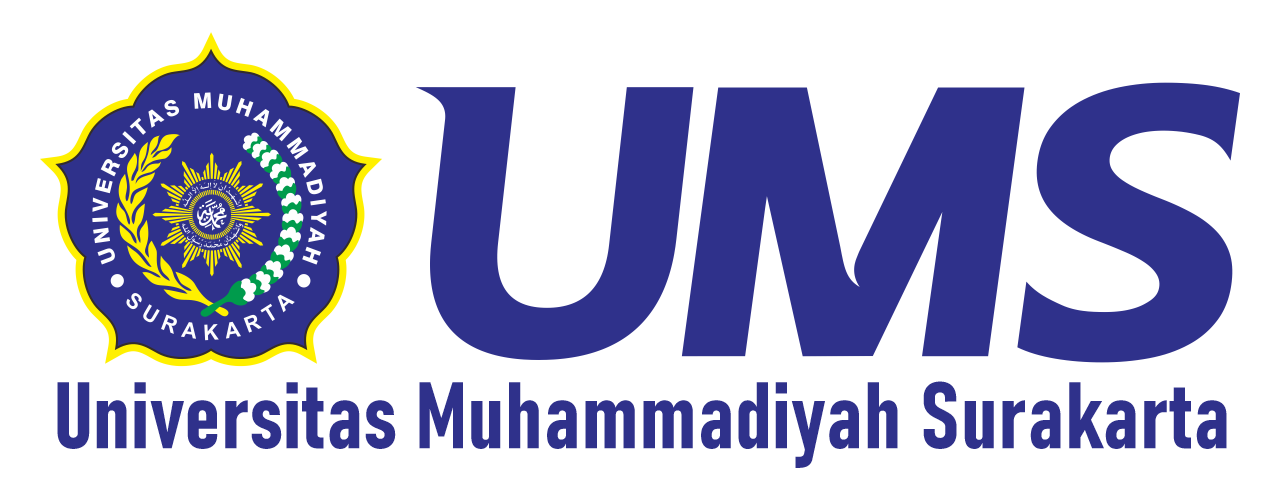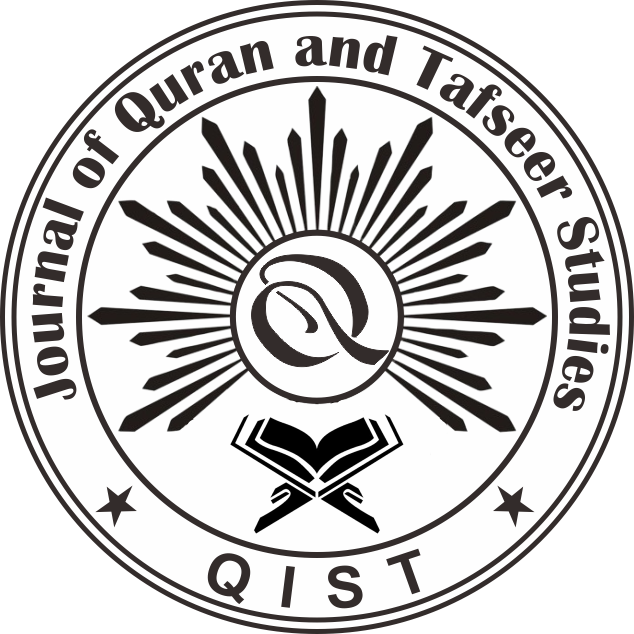Phenomenological Study of Living Qur'an in the Tradition of Death and Reinterpretation of the Younger Generation on the Practice of Khataman Al-Qur'an at Bireuen Cemetery, Aceh
DOI:
https://doi.org/10.23917/qist.v4i1.10614Keywords:
Living Qur'an, Islamic Death Tradition, Khataman Al-Qur'an at the Cemetery, Aceh Local Religiosity, Sociology of Religious RitualsAbstract
This study aims to examine the tradition of reciting the Qur'an at a funeral as a manifestation of the concept of the Living Qur'an in the socio-cultural context of the Bireuen community in Aceh. Using a qualitative phenomenological approach, data were collected through in-depth interviews, participatory observation, and visual documentation. The research findings show that this tradition is not only understood as a form of respect for the deceased but also as a means to strengthen social solidarity, reinforce Islamic identity, and embody the actualization of Qur'anic values, such as amal jariyah and ukhuwah. However, in the last decade, this tradition has faced challenges from reformist groups who criticize it as a form of heresy, as well as the dynamics of the younger generation who have begun to reinterpret its meaning within the framework of purifying religious teachings. Interpretative Phenomenological Analysis (IPA)-based analysis shows that completing the Qur'an at a funeral expands the realm of the Living Qur'an into the event of death, showing a close relationship between the sacred text, social practices, and the life experiences of the local Muslim community. This study provides a new contribution to enrich the discourse of the Living Qur'an by emphasizing the importance of understanding Qur'anic practices within the framework of contemporary culture and social change
References
[1] A. A. Qub'a, M. N. Abu Guba, S. Fareh, and G. Rabab'ah, "The passive voice in the Holy Quran: an exploratory study," Humanit. Soc. Sci. Commun., vol. 12, no. 1, 2025, doi: https://doi.org/10.1057/s41599-025-04622-4.
[2] F. L. Yumni, D. Priyantini, C. Y. Prabawati, and D. Ayatulloh, "Effects of murottal al-qur'an therapy on anxiety and vital signs among primigravida pregnant women in pre-operation caesarean section," J. Ners, vol. 20, no. 2, pp. 127-134, 2025, doi: https://doi.org/10.20473/jn.v20i2.53022.
[3] S. A. Ayash, A. A. G. Saged, and A. Z. Abidin, "The Holy Quran in Modern Thought: Legislation, Revelation, and Interpretation"The (Muminoun Without Borders) Foundation as a Model," Quranica, vol. 17, no. 1 Special Issue 13, pp. 117-162, 2025, [Online]. Available: https://www.scopus.com/inward/record.uri?eid=2-s2.0-105005269909&partnerID=40&md5=e7bc5a9cb75844498009927b0505b350
[4] A. J. Hussain, The Living Qur'an. Chicago, IL, United States: De Gruyter, 2023. doi: https://doi.org/10.1515/9783110795011.
[5] A. Qasim, A. Abdulrazzaq, and M. Dawood, "Linguistic Miracles in the Qur'an: Compartive Analytical Study," Quranica, vol. 17, no. 1, pp. 228-266, 2025, [Online]. Available: https://www.scopus.com/inward/record.uri?eid=2-s2.0-105005721324&partnerID=40&md5=a3374848f5895213b247342a5a5a0c4f
[6] K. Gaanoun and M. Alsuhaibani, "Sentiment preservation in Quran translation with artificial intelligence approach: study in reputable English translation of the Quran," Humanit. Soc. Sci. Commun., vol. 12, no. 1, 2025, doi: https://doi.org/10.1057/s41599-024-04181-0.
[7] G. M. Al-Otaibi, "Semantic prosody of deictic verbs in the Holy Qur'ān: a corpus study," Humanit. Soc. Sci. Commun., vol. 12, no. 1, 2025, doi: 10.1057/s41599-024-04208-6.
[8] A. R. B. Zaman, "Living Quran in the Context of Rural Communities: A Study on the Miracle of the Quran in Gentasari, Kroya, Cilacap," AlBayan, vol. 21, no. 2, pp. 199-216, 2023, doi: https://doi.org/10.1163/22321969-20230132.
[9] R. Ali and S. N. Isnaini, "Digitising Interpretation: Transforming Tafsir Al-Mishbah in the Context of the Living Quran," J. Stud. Ilmu-ilmu al-Qur'an dan Hadis, vol. 25, no. 1, pp. 1-23, 2024, doi: https://doi.org/10.14421/qh.v25i1.5186.
[10] M. Thorvilson, F. Warsame, and A. Ferdjallah, "The role of Islamic Ruqyah at end-of-life: An opportunity to provide metaphysical relief," Palliat. Support. Care, vol. 23, 2025, doi: https://doi.org/10.1017/S1478951525000434.
[11] I. Taufiq and Z. Hassan, "Development model of social exegesis in Indonesia: Exegesis teaching studies in central java," Man India, vol. 96, no. 6, pp. 1607-1621, 2016, [Online]. Available: https://www.scopus.com/inward/record.uri?eid=2-s2.0-84973567177&partnerID=40&md5=397181fbcfab4e3dcaf18bfc2cf9b12f
[12] A. N. AN, "Metode Riset Al-Qur'an dan Tafsir," in Metode Riset Al-Qur'an dan Tafsir, 1st ed., M. Muthoifin, Ed., Surakarta: Muhammadiyah University Press, 2025, pp. 1-485. [Online]. Available: https://mup.ums.ac.id/shop/agama/metode-riset-al-quran-dan-tafsir/
[13] A. Nirwana AN, F. Arfan, F. Dolles Marshal, C. Maulana, and N. Fadli, "Methods of Qur'an Research and Quran Tafseer Research its implications for contemporary Islamic thought," Bull. Islam. Res., vol. 2, no. 1, pp. 33-42, Jun. 2024, doi: https://doi.org/10.69526/bir.v2i1.34.
[14] A. Z. Abidin, S. Noorhidayati, and I. Ahmadi, "Amulet of Quranic Verses in East Javanese Rural: Unraveling Mystical Theology and Living Quran," Acad. J. Interdiscip. Stud., vol. 12, no. 6, pp. 392-400, 2023, doi: https://doi.org/10.36941/ajis-2023-0177.
[15] A. N. A.N., M. Mahmudulhassan, F. D. Marshal, M. Muthoifin, and N. Fadli, "Human rights and social justice in Quranic contexts: a global trend," Leg. J. Ilm. Huk., vol. 32, no. 2, pp. 453-471, Sep. 2024, doi: https://doi.org/10.22219/ljih.v32i2.35088.
[16] M. Yurtseven, F. Çınar, Y. E. Akbay, and A. Tekin, "The Qur'ān Teaching Activities of Ja'farī Communities in Türkiye: An Analysis from the Perspective of Instructors," Religions, vol. 16, no. 4, 2025, doi: https://doi.org/10.3390/rel16040424.
[17] S. Prihatiningtyas, N. Shofiyah, S. R. Yunus, I. B. Ma'arif, and I. A. Putra, "Enhancing science literacy through flipbook-based STEM Qur'an e-modules: a case study in Islamic boarding schools," Humanit. Soc. Sci. Commun., vol. 12, no. 1, 2025, doi: https://doi.org/10.1057/s41599-025-05054-w.
[18] S. A. Alnajashi, M. A. A. Al Qasem, K. A. A. Al-Mishaal, and W. A. E. Aluthman, "The Impact of Attending Qur'an Memorization Programs on Psychological Wellbeing: A Study on Adult Females," Islam. Guid. Couns. J., vol. 8, no. 2, 2025, doi: https://doi.org/10.25217/0020258594900.
[19] N. Salari, R. Fayzi, E. Abdipuor, H. Ghasemi, S. Shohaimi, and M. Mohammadi, "The Effect of Reciting the Quran on the Anxiety of Neurosurgery Muslim Candidates," Heal. Sci. Reports, vol. 8, no. 4, 2025, doi: https://doi.org/10.1002/hsr2.70629.
[20] M. Shakouri, "Cognitive Errors of Unbelievers in the Holy Quran: A Methodological Approach to Disbelief," Relig. Inq., vol. 14, no. 1, pp. 75-90, 2025, doi: https://doi.org/10.22034/ri.2025.446265.1890.
[21] A. I. Hartafan and A. N. AN, "A Study Between Tawhid And Pluralism In Buya Hamka And Nurcholish Madjid's Interpretation Of Kalimatun Sawa In A Comparative Review," AL-AFKAR J. Islam. Stud., vol. 7, no. 1, pp. 159-173, 2024, doi: https://doi.org/10.31943/afkarjournal.v7i1.921.Abstract.
[22] S. S. Al-Kordi, "Rare Qur'anic Expressions (Surat Al-Waqi'ah as a Model): A Semantic and Rhetorical Study," Quranica, vol. 17, no. 1, pp. 54-80, 2025, [Online]. Available: https://www.scopus.com/inward/record.uri?eid=2-s2.0-105005280000&partnerID=40&md5=928cf2278b2b8d9505d48c6cd365bfba
[23] I. A. Al-Omari, A. Al-Shargabi, and M. Hadwan, "Techniques of Quran reciters recognition: a review," IAES Int. J. Artif. Intell., vol. 14, no. 3, pp. 1683-1695, 2025, doi: https://doi.org/10.11591/ijai.v14.i3.pp1683-1695.
[24] F. Rashvand, A. Qolizadeh, and M. Momeni, "Music Therapy Intervention Using a Holy Quran Recitation Improves Feeding Status, Weight Gain and Length of Stay Among Preterm Infants in the Neonatal Intensive Care Unit: A Randomized Clinical Trial," Adv. Neonatal Care, vol. 25, no. 2, pp. E10-E16, 2025, doi: https://doi.org/10.1097/ANC.0000000000001240.
[25] M. Imam, "The Threats of Ai and Disinformation in Times of Global Crises," Bull. Islam. Res., vol. 3, no. 4, pp. 635-650, May 2025, doi: https://doi.org/10.69526/bir.v3i4.394.
[26] Mohieddin Masoud, Abdulnasir Alsayd, and Majdy kasheem, "Global Trends and Challenges in Teacher Training: A Bibliometric Analysis (2019-2024)," Bull. Islam. Res., vol. 3, no. 4, pp. 705-732, Jun. 2025, doi: https://doi.org/10.69526/bir.v3i4.356.
[27] D. N. Ramadhan, D. N. Salsabila, F. A. At-Tauhid, E. Ismail, and A. A. Muhyi, "Merchant Spirituality: Qur'an Verses in Trade Practice at Ujung Berung Market, Bandung," Ishraqi, vol. 24, no. 1, pp. 53-72, 2025.
[28] M. I. Thaib, "Parental Role Models in Children's Character Education in the Society 5.0 Era," Bull. Islam. Res., vol. 3, no. 3, pp. 555-570, May 2025, doi: https://doi.org/10.69526/bir.v3i3.367.
[29] Elias Ahmed, Saif Uddin Ahmed Khondoker, and M. Mahmudulhassan, "Science Education in Bangladesh: A Qualitative Review of Progress, Challenges, and Policy Prospects," Bull. Islam. Res., vol. 3, no. 3, pp. 527-540, May 2025, doi: https://doi.org/10.69526/bir.v3i3.355.
[30] A. A. Muhyi, D. D. Hasanah, E. Ismail, E. C. M. Djamil, F. Fahreza, and F. A. Aziz, "Study of Living Qur'an Reception on the Tilawah Jama'i Tradition at the Tahfidz Miftahul Khoir Islamic Boarding School, Rancaekek, Bandung," Ishraqi, vol. 24, no. 1, pp. 73-88, 2025.
[31] D. A. Haidzam, E. G. Rahayu, E. Rahmawati, E. Ismail, and A. A. Muhyi, "Reception of Civilization Islamic Boarding School Students to the Routine of Reading Surah Al-Kahfi Every Friday," Ishraqi, vol. 24, no. 1, pp. 33-52, 2025.
[32] A. A. Muhyi, E. Ismail, D. Nurfazri, D. Sukmawati, F. Al-Munawar, and G. R. Jannah, "The Use of Qur'an Verses in Wafaq Rebo Wekasan: Study on Living Qur'an in Pondok Pesantren Salafi Asy-Syafi'iyah at Narawita Cicalengka Village," Ishraqi, vol. 24, no. 1, pp. 89-106, 2025.
[33] D. Ramdani, D. M. F. Ramadlan, E. Ismail, and A. A. Muhyi, "The Tradition of Reciting Surah Yasin Three Times on the Night of Nisfu Sha'ban: Study of Living Qur'an at the Miftahussudur Mosque, Cibiru District, Bandung City," Ishraqi, vol. 24, no. 1, pp. 107-126, 2025.
[34] M. A. Ishiguro, "Dance as Cultural Practice vs. Religious Piety: Acehnese Dance in Banda Aceh and Yogyakarta," Danc. Res. J., vol. 54, no. 3, pp. 68-90, 2022, doi: https://doi.org/10.1017/S0149767722000274.
[35] T. Hussain and D. Wang, "Social Media and the Spiritual Journey: The Place of Digital Technology in Enriching the Experience," Religions, vol. 15, no. 5, pp. 1-28, 2024, doi: 1 https://doi.org/0.3390/rel15050616.
[36] T. Khataman, M. Muslim-sunda, and S. Tradisi, "Khataman Qur'an," vol. 2, no. 1, pp. 39-52, 2023.
[37] K. Z. Sands, Interpreting the qur'an. 2006.
[38] R. Husna, A. Zayyadi, and D. O. Wirendri, "The Relationship of Faith and Tolerance in The Film One Amen Two Faith: Living Qur'an Perspective," J. Islam Nusant., vol. 6, no. 1, p. 1, 2022, doi: https://doi.org/10.33852/jurnalnu.v6i1.343.
[39] R. Hidayat, Z. Mustafa, L. Ode, and I. Ahmad, "HARMONIZATION OF ISLAMIC VALUES AND LOCAL WISDOM IN THE MACCERA," vol. 26, no. 2, pp. 245-270, 2024.
[40] M. Amin, M. R. Fadil, and S. Syafieh, "Scientific Tradition and Development of The Qur'anic exegesis in Aceh," AL QUDS J. Stud. Alquran dan Hadis, vol. 6, no. 2, p. 553, 2022, doi: https://doi.org/10.29240/alquds.v6i2.4175.
[41] and M. M. Setyowati, Intan, "Talaqqi Method in Learning Tahfidz Al-Qur'an at Islamic Elementary School.," Afeksi J. Penelit. Dan Eval. Pendidik., vol. 05, no. 02, 2024.
[42] F. C. Fathurrahman, T., Ramadhan, M. R., & Leonardo, "Nurul Iman Al-Quran Education Park (TPA) Efforts in Creating a Superior Qur'an Generation From an Early Age. PP 72-80," Ensiklopedia J. Pendidik. dan Inov. Pembelajaran, vol. 02, no. 03, 2023.
[43] Basri, A. J. Putra, T. Zulfikar, and Wahidah, "Dayah on the Move: Social Engineering Through Islamic Education Reformation in Post-Conflict Aceh, Indonesia," J. Ilm. Islam Futur., vol. 23, no. 2, pp. 60-87, 2023, doi: https://doi.org/10.22373/jiif.v23i1.15695.
[44] I. Annas and I. Permana, "Science Learning with The Qur'an and Hadith Through Audiovisual Media (Video) to Improve Concept Mastery and Religious Attitude," J. Sci. Educ. Pract., vol. 6, no. 2, pp. 107-118, 2022, doi: 10.33751/jsep.v6i2.5855.
[45] N. Wirda Afriani, Silfia Hanani, "Living Qur'an as A Method to Turn on Quranization in the Community," UIN Bukit Tinggi, vol. 1, no. 1, 2023.
[46] I. Setyowati and M. Mansur, "Talaqqi Method in Learning Tahfidz Al-Qur'an at Islamic Elementary School," Afeksi J. Penelit. dan Eval. Pendidik., vol. 5, no. 2, pp. 184-197, 2024, doi: https://doi.org/10.59698/afeksi.v5i2.234.
[47] A. Astalini, D. Darmaji, D. A. Kurniawan, R. I. Widodo, and S. Rohana, "Junior High School Teacher's Forum Group Discussion Response on Application of Adat Bersendi Syara' Syara' Bersendi Kitabullah in Learning," J. Eval. Educ., vol. 3, no. 4, pp. 102-107, 2022, doi: https://doi.org/10.37251/jee.v3i4.283.
[48] E. Al Combs, Kayla, ""Cultural or Spiritual End-of-Life Practice Preference Assessment and Documentation: Identifying Current Practice in Pediatric Hospice.," ournal Hosp. Palliat. Nurs., vol. 27, no. 2, 2025.
[49] E. al Manan, Abdul, ""The Unity of Community in Cemetery: An Ethnographic Study of the Islamic Burial Rituals in Aceh, Indonesia," J. Ilm. Islam Futur., vol. 24, no. 1, 2024.
[50] A. Mahfud, "Mahfud. 'Metode Living Qur'an Sebagai Penanganan Masalah Dalam Lingkungan Masyarakat.,'" SALIHA J. Pendidik. Islam, vol. 06, no. 02, 2023.
Submitted
Accepted
Published
How to Cite
Issue
Section
License
Copyright (c) 2025 Siti Khodijah, Sori Monang

This work is licensed under a Creative Commons Attribution 4.0 International License.
















